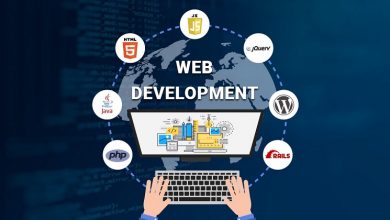Top Android Libraries for 2022

Libraries play a significant role in the development process, even though frameworks are crucial because they are essential in creating any framework. We may avoid repeatedly writing the same line of code by using a library containing the codes we frequently use while creating Android apps. In a nutshell, you must employ pre-written codes for various features that you can add to your app with a few simple clicks.
Many Android libraries are now readily available to assist you in completing your work quickly, thanks to the tireless efforts of the dedicated Android development community and app developers worldwide.
Why Develop Android Apps Using Libraries?
2022 is designated to create new benchmarks for digitization. All this is because of the creation of original, practical, and bug-free mobile applications. Seeking the assistance of libraries is a sure-fire success for any Android app developer looking to go for the speedier and optimized app development.
When Android libraries can do it in a few easy steps, there is no reason for app developers to grow weary of producing outstanding apps. Not skipping the bug-free creation of responsive apps with the least amount of resources is essential.
Instead of creating the libraries from scratch, it is easier to employ the pre-written scripts and other components which the developers can use. For easy, rapid, precise, and feature-rich app development, novice developers can use Android libraries.
Networking Libraries
These libraries facilitate networking interaction between the apps. The top and most often used three networking libraries are:
Activity recognition API
Users can identify their current activity, such as driving, jogging, standing still, or strolling, using activity recognition API. By tapping the “Request Updates” buttons, developers can access the most recent information regarding user activities.
You must manually disable those updates by clicking the “Eliminate updates” button because there is no method to do so automatically.
EventBus
Using the EventBus framework can solve the communication problem between dynamic components when an Android app development company creates an Android application with various of them.
Retrofit
Retrofit helps to translate into client interface using the Java and Android module. Add endpoints and headers to a code, then edit them to suit your requirements. Retrofit is easy to implement and provides a vast selection of serialization libraries to suit our needs.
Image Loading Libraries
These libraries mangae the memory of photos which are uploaded in the app. The two popular image loading libraries are:
Picasso
Picasso is an android image library that enables one line of code to load a picture in an android application. It allows for automatic memory management, caching, cancelling downloads in an adapter, and managing image view recycling. To add cutting-edge effects to your photographs, specify as many custom image modifications as you like.
Glide
You can use Glide Glide to decode and show photos, animated GIFs, and video stills after retrieving images from the specified directory. Versatile API can quickly and easily plug the Glide image loading library into any network stack.
Scanning Libraries
These libraries make it easier for developers to include canning features into any Android app. Two of the well-known scanning libraries are:
CAMView
CAMView can use an Android smartphone’s camera to scan barcodes with a built-in QR reader. It automatically adds several components to the layout files so you may view a real-time video feed from the camera and scan barcodes using the cutting-edge Zxing decoding engine.
Zxing
It is a Java image processing toolkit. This library may also use with other programming languages to create Android apps. Google uses Zxing to index barcodes which are made pulic online.
View Binding Libraries
While assigning views to various variables, these libraries reduce boilerplate code. Two popular view binding libraries are as follows:
Android Databinding
It is an integrated Android Support Library that needs Android Studio Version 1.3 or higher to function correctly. Android Databinding do not require annotations. It enables programmers to fix UI elements in layouts to various app data sources. Instead of the programming methods, declarative formats are used. For example, the userName property of the variable ViewModel is bound to the TextView widget using findViewByld(). Hence, layouts need UI framework API codes.
ButterKnife
ButterKnife was created by Jake Wharton to make ID viewing and assigning simple. Therefore, in an ideal world, the sentence “Butterknife is like Daggar except vastly less sharp” holds without needing dependency injection. The boilerplate codes are made with ButterKnife annotations. As a result, the onTouch, onClick, etc., are no longer required by replacing these with auto-injected codes in the programme.
Libraries Debugging
The debugging libraries are the essential Android libraries that are used before the release of the apps. There are two well-known debugging libraries:
Hyperlog Android
It is an efficient debugging library used to push logs from Android libraries to remote servers for debugging. Additionally, it is a utility logger library that provides end-to-end visibility and aids problem-solving. Typical applications include HyperTrack SDK, which sends logs to the Hyperlog server and then processes them using the ELK stack before displaying the results on Kibana.
Stetho
As the “advanced debug bridge for Android applications,” Stetho enables access to the Chrome Developer Tools, which are a feature of the Chrome desktop browser in addition to debugging. It provides a JavaScript Console, network inspection, database examination, etc. Additionally, it allows developers to activate the dump app tool, which provides full command-line access for application internals.
Google Jetpack
Google finally introduced a set of native Android app development libraries in 2018 after the company had long been hearing their cries. These libraries will aid programmers in minimizing boilerplate code and writing programmes for numerous Android devices and OS iterations in one location.
Dependency Injection Frameworks
Android app developers utilize the dependency injection technique to design the library architecture for their apps. One of the most popular techniques for creating Android apps is this one.
Koin
As opposed to the Dragger2 library, which needs significant preparation before you can use it, Koin is a Kotlin-based dependency injection library for Android app development that requires minimal to no configuration. Koin is a one-stop shop for your dependency injection library needs, from enabling lazy injection and view models to producing minimal boilerplate code.
Dagger2/Hilt
A dependency injection library called Dragger 2 uses java annotation processors to evaluate and estimate dependencies simultaneously. The most recent version of the Dragger2 dependency injection library, called the hilt, makes it simple for developers to access shared instances.
How To Select An Ideal Android Library For Your Use?
To make this easier for you, we have included the evaluation procedure. Take into account these seven steps before selecting a library.
The Library’s Popularity
One can view the candidate library’s stars. Followed by the quantity and seriousness of issues that have been reported for that library. A library’s popularity among many developers is a reliable sign of its high calibre.
Author Trustworthiness
It will be preferred if developers do their research for the libraries. Verify whether they have published many libraries or are active on GitHub.
Excellent Library
Please examine their code to see how effectively it is written and organized. Verify whether or not the libraries have a thorough and current README file. The README file will make integration straightforward.
Proper licence
The ability to sell a product may be subject to several limitations. Because illegal libraries may restrict the use of libraries, the licence is another aspect that may influence the choice. Ensure you abide by all the conditions of any libraries you intend to use in your app.
Free Software
To evaluate a library’s performance or quality and debugging, you must have access to its source code. A lack of transparency also puts security at risk.
References from the Library
Many “de-facto” libraries are available on most platforms, including Retrofit, Butterknife, Picasso/Glide, and RxJava. These libraries’ high-quality, well-maintained, and documented resources are their best quality. These libraries provide low-risk usage while remaining independent. Instead, you conduct your investigation to comprehend their advantages, drawbacks, and features.
Examine the Core Features
The code should be entirely under your control. Libraries make the sacrifice to support a variety of use cases. Since the main features are libraries, there is no difference in the trade-offs. The core features can compromise performance. Thus, attempt to rely on already-validated libraries.
Summing Up
Without the focused usage of specific libraries, developing an Android app is impossible. As a result, one of the main advantages of the various Android libraries is that it allows developers to produce more apps in less time without compromising their quality.
Check our latest blogs to know more about the upcoming advancements in technology.
To suit your business’s web application development needs, you can engage Android Developers at Nestack. We will provide you with the appropriate solution for your projects and execute them efficiently and securely.
At Nestack, we provide you with advanced infrastructure and skilled professionals. Our developers will help you with your projects and deliver consistent performance.
Visit us at https://nestack.com/services/outsource-android-development/ to know more about our services.
Contact us at info@nestack.com.





